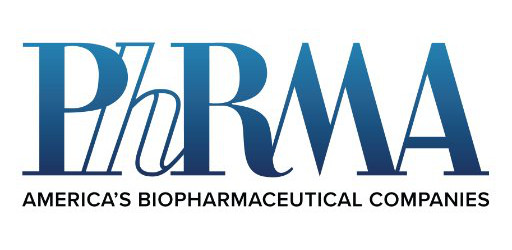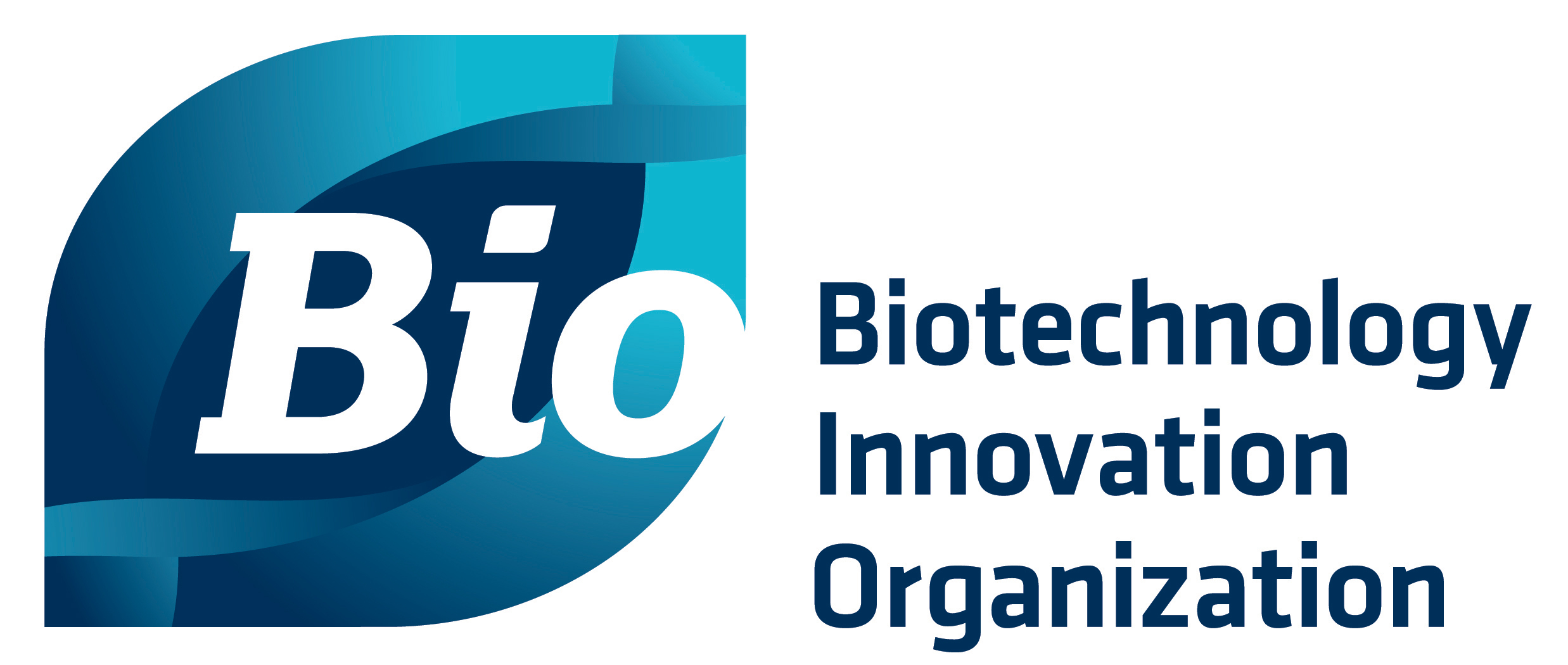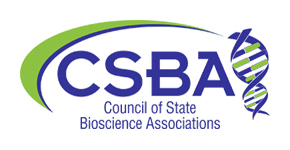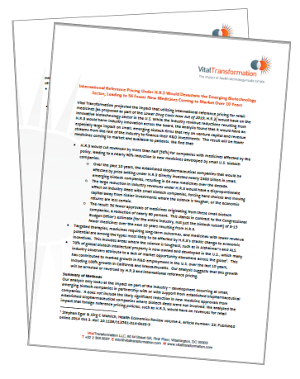International Reference Pricing Under H.R.3 Would Devastate the Emerging Biotechnology Sector, Leading to 56 Fewer New Medicines Coming to Market Over 10 Years
Vital Transformation projected the impact that utilizing international reference pricing for retail medicines (as proposed as part of the Lower Drug Costs Now Act of 2019, H.R.3) would have on the innovative biotechnology sector in the U.S. While the industry revenue reductions resulting from H.R.3 would harm industry innovation across the board, the analysis found that it would have an especially large impact on small, emerging biotech firms that rely on venture capital and revenue streams from the rest of the industry to finance their R&D investments. The result will be fewer medicines coming to market and available to patients.
The Research
The Executive Summary
Key Findings
- H.R.3 would cut revenues by more than half (58%) for companies with medicines affected by the policy, leading to a nearly 90% reduction in new medicines developed by small U.S. biotech companies.
- Over the past 10 years, the established biopharmaceutical companies that would be affected by price setting under H.R.3 directly invested nearly $300 billion in small, emerging biotech companies, resulting in 64 new medicines over the decade.
- The large reduction in industry revenues under H.R.3 would have a disproportionate effect on industry deals with small biotech companies, forcing hard choices and moving capital away from riskier investments where the science is tougher, or the economic returns are less certain.
- The result: 56 fewer approvals of medicines originating from these small biotech companies, a reduction of nearly 90 percent. This stands in contrast to the Congressional Budget Office’s estimate (for the entire industry, not just the biotech subset) of 8-15 fewer medicines over the next 10 years resulting from H.R.3.
- The largest overall impact will be seen in the likely loss of 16 cancer treatments ranging from chronic myeloid leukemia (CML), lymphoblastic leukemia, ovarian cancer, breast cancer, prostate cancer, and Hodgkin’s & non-Hodgkin’s lymphoma. We lose two therapies for COPD, as well as two treatments for non-insulin-dependent diabetes
- Our cohort will also likely lose 10 orphan drugs for rare conditions including therapies for pulmonary fibrosis, glioblastoma (cancers of the brain), pulmonary arterial hypertension, several forms of amyloidosis, pediatric hyperparathyroidism, myelofibrosis, and Fabry Disease. Also included in the 56 drugs at risk are novel treatments for migraine, narcolepsy, wound care, hepatitis B, dry eye syndrome, and even lice Infestations.
- 70% of global biotech intellectual property is now owned and developed in the U.S., which many industry observers attribute to a lack of market opportunity elsewhere across the globe[1]. This has contributed to marked growth in R&D employment in the U.S. over the last 10 years, including 100% growth in California and Massachusetts. Our analysis suggests that this growth will be arrested or reversed by H.R.3 and international reference pricing.
Summary of Methods
Our analysis only looks at the impact on part of the industry – development occurring at small, emerging biotech companies in partnership with or with support from established biopharmaceutical companies. It does not include the likely significant reduction in new medicine approvals from established biopharmaceutical companies where biotech deals were not involved. We analyzed the impact that foreign reference pricing policies, such as H.R.3, would have on revenues for retail medicines, and how that impact would spread to the commercial market and other non-Part D revenues. Because of our narrow focus, these results can be viewed as conservative.
- Based on the House Ways and Means committee analysis, we identified 69 unique medicines sold by 25 companies that would be affected by international reference pricing under H.R.3. These 69 medicines represent 70% of Part D revenues for these companies.
- R.3 was estimated to result in a 58% reduction in annual revenues for these 69 medicines — $72 billion per year – based on Ways and Means estimates of international price differentials.
- To estimate the impact these industrywide revenue reductions would have on small biotech company R&D, the universe of small firms affected by the policy was identified. We searched the Medtrack database for all U.S. deals from October 2009 to 2019 involving biopharmaceutical partnerships, venture capital financing, licensing agreements, and acquisitions made by the 25 established biopharmaceutical firms identified above as having products impacted by H.R.3.
- This identified 331 innovative emerging biotech firms receiving nearly $300 billion in direct investments over the 10-year period. This funding came primarily from established companies’ “free cash flow,” meaning that these were investments that may not have otherwise been part of the companies’ R&D budgets and may be more at risk of cuts in the face of revenue reductions.
- Of these 331 small biotech firms, 64 received marketing authorization for a new product, under current policy conditions.
- Our logistic regression analysis reveals that a project’s revenue potential is highly predictive of the level of R&D investment, and the level of investment is highly predictive of ultimate approval. These relationships were used to estimate the predicted probability of approval for each of the 69 biotech medicines identified as at risk from H.R.3.
- Arraying these probabilities from most to least likely, and assuming that established biopharmaceutical companies will only fund the most likely bets with the reduced revenues available to invest under H.R.3, reveals that only 8 of the original 64 would still be funded.
[1] “Stephan Eger & Jörg C Mahlich, Health Economics Review volume 4, Article number: 23 – Published online 2014 Oct 3. doi: 10.1186/s13561-014-0023-5”
Supported by:







